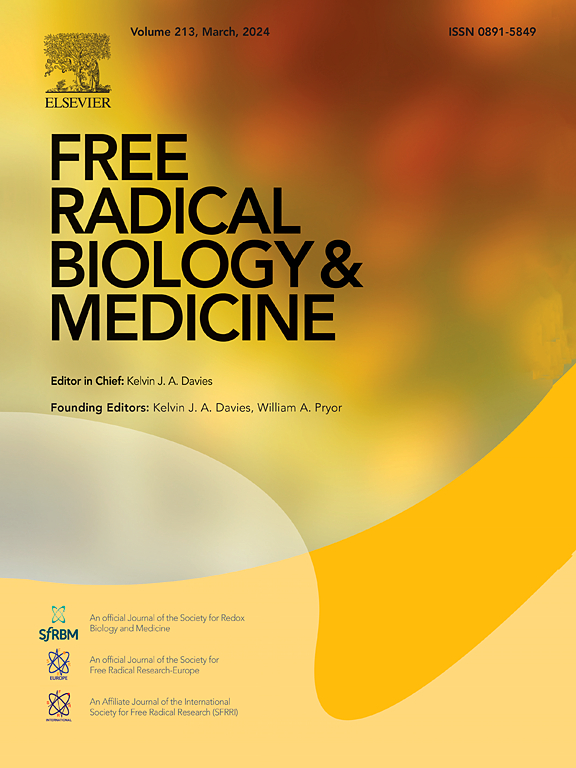Iron overload exacerbates metabolic dysfunction-associated steatohepatitis via the microbiota-gut-liver axis through lipopolysaccharide-mediated Akr1b8 activation
IF 7.1
2区 生物学
Q1 BIOCHEMISTRY & MOLECULAR BIOLOGY
引用次数: 0
Abstract
Iron homeostatic is closely linked to the development of metabolic dysfunction-associated steatohepatitis (MASH). However, the underlying mechanisms remain poorly understood. HFE knockout (KO) mice were used to generate mild iron-overload models. MASH was induced by feeding mice a methionine- and choline-deficient (MCD) diet for 4 weeks. Iron overload significantly exacerbated the pathologies of MCD-induced MASH, including liver injury, hepatic lipid accumulation, inflammation, and fibrosis. Additionally, iron overload reshaped the composition of gut microbiota, and fecal microbiota transplantation assay proved that gut microbiota from iron-overload mice contributed to hepatic lipid accumulation in control mice. Furthermore, iron overload-induced dysbacteriosis altered the metabolite profiles, reducing short-chain fatty acid levels and increasing lipopolysaccharide (LPS) levels. Notably, elevated LPS levels upregulated the expression of aldo-keto reductase family 1 member B8 (Akr1b8), which accelerated lipid accumulation and inflammation in hepatocytes. Above results indicated that iron overload promoted MASH progression through the microbiota-gut-liver axis, mediated by LPS-induced activation of Akr1b8. These findings highlight the critical role of iron homeostasis and gut microbiota in MASH pathogenesis.

铁超载通过脂多糖介导的 Akr1b8 激活,通过微生物群-肠-肝轴加剧代谢功能障碍相关性脂肪性肝炎。
本文章由计算机程序翻译,如有差异,请以英文原文为准。
求助全文
约1分钟内获得全文
求助全文
来源期刊

Free Radical Biology and Medicine
医学-内分泌学与代谢
CiteScore
14.00
自引率
4.10%
发文量
850
审稿时长
22 days
期刊介绍:
Free Radical Biology and Medicine is a leading journal in the field of redox biology, which is the study of the role of reactive oxygen species (ROS) and other oxidizing agents in biological systems. The journal serves as a premier forum for publishing innovative and groundbreaking research that explores the redox biology of health and disease, covering a wide range of topics and disciplines. Free Radical Biology and Medicine also commissions Special Issues that highlight recent advances in both basic and clinical research, with a particular emphasis on the mechanisms underlying altered metabolism and redox signaling. These Special Issues aim to provide a focused platform for the latest research in the field, fostering collaboration and knowledge exchange among researchers and clinicians.
 求助内容:
求助内容: 应助结果提醒方式:
应助结果提醒方式:


